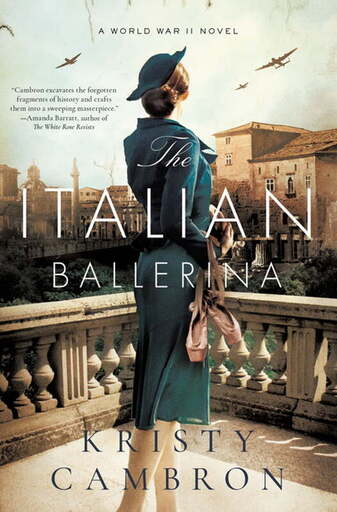|
Summary At the height of the Nazi occupation of Rome, an unlikely band of heroes comes together to save innocent lives in this breathtaking World War II novel based on real historical events. Rome, 1943. With the fall of Italy’s Fascist government and the Nazi regime occupying the streets of Rome, British ballerina Julia Bradbury is stranded and forced to take refuge at a hospital on Tiber Island. But when she learns of a deadly sickness sweeping through the quarantine wards—a fake disease known only as Syndrome K—she is drawn into one of the greatest cons in history. Alongside hospital staff, friars of the adjoining church, and two Allied medics, Julia risks everything to rescue Jewish Italians from the deadly clutches of the Holocaust. Soon a little girl who dreams of becoming a ballerina arrives at their door, and Julia is determined to reunite the young dancer with her family—if only she would reveal one crucial secret: her name. Present Day. Delaney Coleman recently lost her grandfather—a beloved small-town doctor and World War II veteran, so she returns home to help her aging parents. When a mysterious Italian woman reaches out claiming to own one of the family’s precious heirlooms, Delaney is compelled to travel to Italy and uncover the truth of her grandfather’s hidden past. With the help of the woman’s skeptical but charming grandson, Delaney learns of a Roman hospital that saved hundreds of Jewish people during the war. Soon, everything Delaney thought she knew about her grandfather comes into question. Based on true accounts of the invented Syndrome K sickness, The Italian Ballerina journeys from the Allied storming of the beaches at Salerno to the London ballet stage and the war-torn streets of World War II Rome, exploring the sometimes heart-wrenching choices we must make to find faith and forgiveness, and how saving a single life can impact countless others. Positives All hail a master of time slip! Kristy Cambron’s The Paris Dressmaker is one of my favorite books, and her use of time slip stuck with me and made it impossible to put down. She has used it masterfully once more, although the story itself is very different. That first chapter with Court grabbed me right off the bat. Everything I love to see in a chapter—action, questions, and a glimpse inside the character’s head. The ending of this book broke my heart in all the best ways. I did not see it coming at all. Honestly, the beginning was similar to books I’ve seen before—the girlfriend’s surprise pregnancy, the guy heading off to war after finding out the news. But the ending, and the story that led to it, was something different. It was unmistakably true, good even amidst the pain, and a departure from the tradition happy endings we see all the time. Turning the tropes on their head helped the themes hit my heart in a meaningful new way. I also admired Matteo and Delaney’s avoidance of the misunderstanding trope that honestly I would be happy to never see in romance again. When a piece of Matteo’s past came up, Delaney worked through in both a kind and sensible manner. Cheers all around. Also, a cool nod to Indiana in there! Negatives None. Conclusion The Italian Ballerina steps onto a stage occupied by many others—many other WWII novels, many other time-slip novels, many other tropes. But it distinguishes itself from the start. Its finale will not be forgotten, along with the meaningful questions it raises.
0 Comments
Leave a Reply. |
Rachel's Reads
Hi there! Rachel again. Check out this section for book reviews and cover reveals of some of my favorites! Archives
June 2023
Categories
All
|

